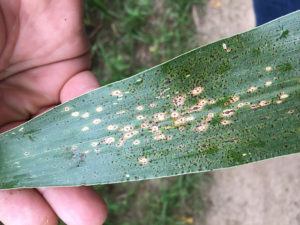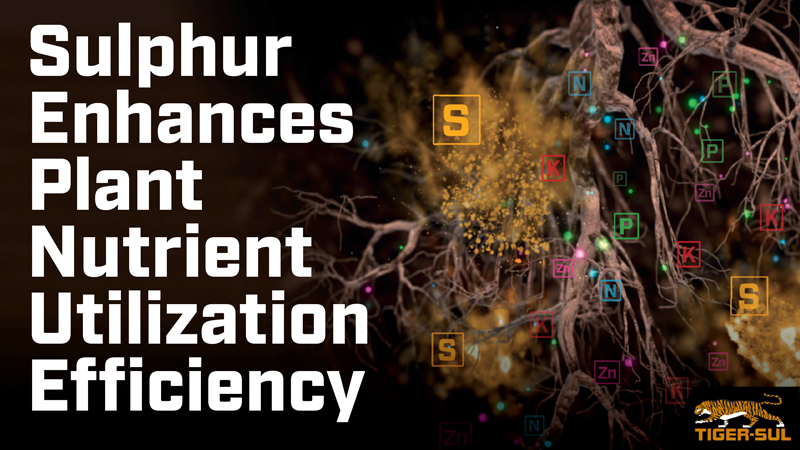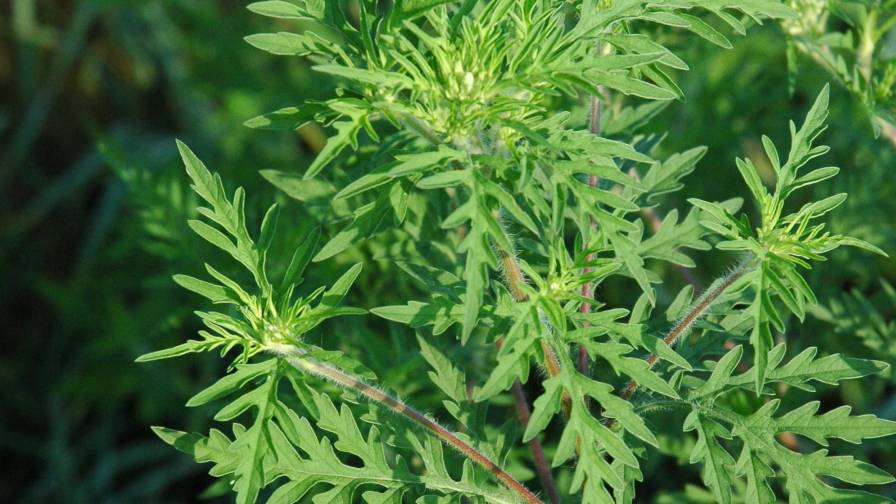Fungicide Watch: Most Worrying Diseases for 2019
“The 2018 season was highly conducive for the development of many diseases. If we didn’t have the right management tools at the right time, we saw a lot of failures,” says Dr. Darcy Telenko, Assistant Professor of Field Crops Pathology at Purdue University.

Telenko
“I know some growers are going to be spraying everything (in 2019). I caution that,” she adds. “You need to understand the pathogen you’re fighting to utilize the most effective and economic disease management tools. These should first start with identifying a resistant hybrid, then look toward using a timely application of a fungicide if environmental conditions favor disease.”
Most growers, however, are leaning more conservatively on that last input decision that they typically have, in response to suppressed commodity prices, as observed by Dr. Loren Giesler, Head of the Plant Pathology Department at the University of Nebraska–Lincoln.
“When we looked in the past at fungicide applications in absence of significant disease, many times they weren’t getting over two bushels on average in soybean. You can’t pay for the fungicide unless you have a disease problem that’s going to get you more than that,” Giesler says.
“The end message is scouting is required. If you have high-risk corn and soy varieties that have higher susceptibility to certain diseases, those are the ones you’re scouting and are prepared to make applications in those fields. Those that aren’t susceptible, you can reel back.”
The One to Watch in Corn
The big disease everyone will be watching in 2019 is tar spot. First identified in Indiana and Illinois in 2015 by Dr. Kiersten Wise and several colleagues at Purdue University, not much was heard about it in 2016. By 2018 its spread was evident. It is now in seven American states, but prior to 2015 tar spot was found only in Mexico, Central America, and northern parts of South America.

Tar spot is caused by the fungus Phyllachora maydis. The symptoms of tar spot look very much like tar splattered onto the surface of the leaf.
Since tar spot is new, it could be confused with other disorders that have similar black spot symptoms, such as old rust lesions, Physoderma brown spot, insect frass, or saprophytic fungi common after senescence, Telenko says. “The hardest thing can be knowing what pathogen you’re dealing with. If you don’t really know, take a sample and send it to us, or get a picture at the least.”
Yield loss attributed to tar spot is highly variable. Telenko’s preliminary data, collected from Purdue’s Hybrid Performance Trials, shows that a 0.3- to 0.8-bushel loss was seen for every 1% increase of tar spot. If there is a 40% infection on leaf tissue, for example, a loss of 12 to 30 bushels per acre could occur. In some locations where the epidemic was severe, yield losses up to 60 bushels per acre were reported, she says.

Tedford
Dr. Eric Tedford, Fungicides Technical Product Lead with Syngenta, says the best chance for success at beating tar spot is to position fungicide applications as preventive as opposed to curative control.
For tar spot, as with Northern corn leaf blight, growers should go in early with an application around the V4 through V8 growth stages. Syngenta’s Trivapro, Miravis Neo (new for 2019) — both of which combine three active ingredients — and Quilt Xcel are all labeled for tar spot control.
Miravis Neo is part of the new Miravis fungicide line from Syngenta containing the Adepidyn molecule. It is labeled for corn and soybeans and controls some of the most damaging diseases, such as gray leaf spot, Northern corn leaf blight, and rusts. In soybeans it controls white mold, frogeye leaf spot, and Septoria leaf spot.
If conditions still favor development of tar spot past V8, go out and make a second application at VT/R1, Tedford advises. Just as importantly, utilize as many cultural practices as possible: Rotate to other crops and plant a less susceptible corn hybrid.
“The reality is that there is still a lot we don’t know about the disease. We’re borrowing from what plant pathologists and other scientists in Latin America have generated. It might not always behave the same way in another country,” Tedford explains. “There is a need for more effort into understanding the epidemiology of the disease: to know exactly where it is located, where it is going to move to next, and what the ideal conditions are that favor development of the disease.”
What to Do About Seed Decay
“This is one of the worst years I’ve seen for seed quality,” Giesler says. Following the late wet conditions witnessed in the latter part of the 2018 season, mature beans sat in fields for a long time — in some cases, a shockingly long time. “I saw people out last week (at the end of December) combining beans. That’s pretty crazy,” he says.
Across Iowa and the north central region, seed suppliers have reported that this year’s crops of seed soybean are frequently testing positive for the Diaporthe fungus (Phomopsis seed decay), which is resulting in lower-than-normal germination rates of seed, according to Ethan Stoetzer and Dr. Daren Mueller with Iowa State University Extension and Outreach’s Integrated Crop Management News. Seed decay is characterized by cracked, shriveled seed with white chalk-colored mold on the seed surface.
Many dealers will want to have their seed treated with a fungicide to increase the chances of germination and prevent seedling diseases, Mueller says. According to past Iowa State University research, appropriate seed treatments can increase germination rates by 10% to 15%.
“To be proactive with seed production in 2019, foliar fungicide applications to protect from seed infection between R3 (beginning pod) and R5 (beginning seed) may reduce seed infection, especially in seed production fields. Although fungicide applications may reduce disease and improve seed quality, yield may not be impacted,” Mueller says.
When deciding on which fungicides will be the most effective, consult the Crop Protection Network’s guide on seed treatments, which includes a chart that rates the efficacy of fungicides for several diseases.
Extra Input Costs
“The disease that has me most worried, because it’s going to add an extra input cost for 2019, is frogeye leaf spot and potentially also Cercospora leaf blight,” says Dr. Anne Dorrance, Professor of Plant Pathology at The Ohio State University. “Both diseases are residue borne — residue is the primary source of inoculum. We had very high populations at the end of the season last year. It was a rainy season, and there’s not much we can do about it, so a lot of inoculum was probably left over to overwinter.”
For growers who want to hit the top yield in the chart, Giesler reminds: “Sometimes super high-yielders are susceptible to disease problems, and growers have to manage them secondarily. If they do it effectively, they’re still going to maximize their yield, but it’s just another input that they almost have to ensure they are going to make if they go into a frogeye scenario with a susceptible variety.”
Dorrance’s top recommendation is to be extra diligent in variety selection. A good resistance package is key, especially if the grower had frogeye leaf spot in their field the year before.
“It’s definitely not the time to plant that same variety in the same field, because you’re just asking for trouble. If you have planted a resistant variety and it doesn’t develop by that R3 spray time, then in many cases you won’t need a fungicide spray,” she says. “Since we’re trying to cut costs for the 2019 season, that’s one of the best ways to eliminate an additional input. By choosing an effective resistance package up front, the grower can put their money in a better seed and hopefully that will get them through the season.”
If the grower plants a variety that has a low to moderate score for resistance, scouting around flowering time will be essential to know whether spraying at R3 to R4 time is needed, Dorrance adds. “As a plant pathologist, I push growers to buy the varieties that will match the conditions on their field. You can solve a lot of problems by making the best variety choice.”
If frogeye is a problem, tetraconazole and FMC-patented flutriafol are the best triazole-based fungicides to manage the disease, says Dr. Tom Allen, Extension Plant Pathologist with Mississippi State University.
However, since most frogeye is strobulurin-resistant, all of the selection pressure is on triazoles, says Nick Hustedde, FMC Technical Service Manager for Indiana and Illinois.
FMC is debuting a new fungicide for the 2019 season, Lucento, which is going to be labeled for corn, soybean, sugarbeet, wheat, and peanuts, and has demonstrated broad spectrum control, including efficacy against frogeye leaf spot. Lucento combines two active ingredients, bixafen and flutriafol, and is highly systemic with rapid movement through the plant.
“From a resistance-management standpoint, you should mix up fungicide active ingredients and modes of action and don’t make two applications of the same product in a single season. We still have a lot of that going on in places. But it’s a hard thing to discuss and a pretty contentious issue,” Allen says.
Yes to Automatic Application?
For growers in the South, Septoria brown spot and target spot in soybean are larger problems than frogeye leaf spot. Stem canker remains a huge issue in the region, so choosing a stem canker-resistant variety is imperative, Allen says.
As expected, growers down South typically spend more on fungicides than those farther north. In general, farmers spend $10 to $20 per acre on an automatic fungicide application, Allen says. While these applications have been shown to more than pay for themselves, the data have shifted in recent years thanks to reduced commodity prices and increased fungicide resistance.
“The bulk of the dataset over the last 10 years suggests that a standalone strobilurin/QoI inhibitor (e.g., BASF’s Headline or Syngenta’s Quadris) have provided a four-plus bushel acre response with an automatic application in greater than 50% of trials we’ve conducted,” Allen explains. “The problem is three to four years ago an automatic fungicide application with a single mode of action, standalone strobilurin, has shown to be break even or the same as non-treated acres. A lot of that is because of fungicide resistance issues (to target spot fungus.)”
In other words, the automatic application has been a trickier conversation topic of late.
“What I tell folks is if they make an automatic application, I tend to err on the side of going as late as you can,” Allen says.
FMC’s Hustedde adds: “Growers are going to be watching their spend, but I’d caution them to not remove inputs, especially in areas where they know they have pressure. You’re going to spend more on fungicides and purchasing tolerant hybrids, but at the end of day you can lose 30% of your yield on a pathogen. Preserving your yield potential is more dollars to your bottom line.”






